Hibiscus Growing Tips: Light, Water & Pruning for Best Blooms
I’ll never forget the first time I saw a proper hibiscus in full bloom—it was at my neighbor’s house, and honestly, I stood there gawking like a tourist.
The flowers were the size of dinner plates, these gorgeous coral-pink trumpets that seemed to glow in the morning light.
I immediately marched over and peppered poor Martha with questions (she’s used to my garden enthusiasm by now).
That conversation sparked my hibiscus obsession, and let me tell you, these showstoppers have completely transformed my outdoor space.
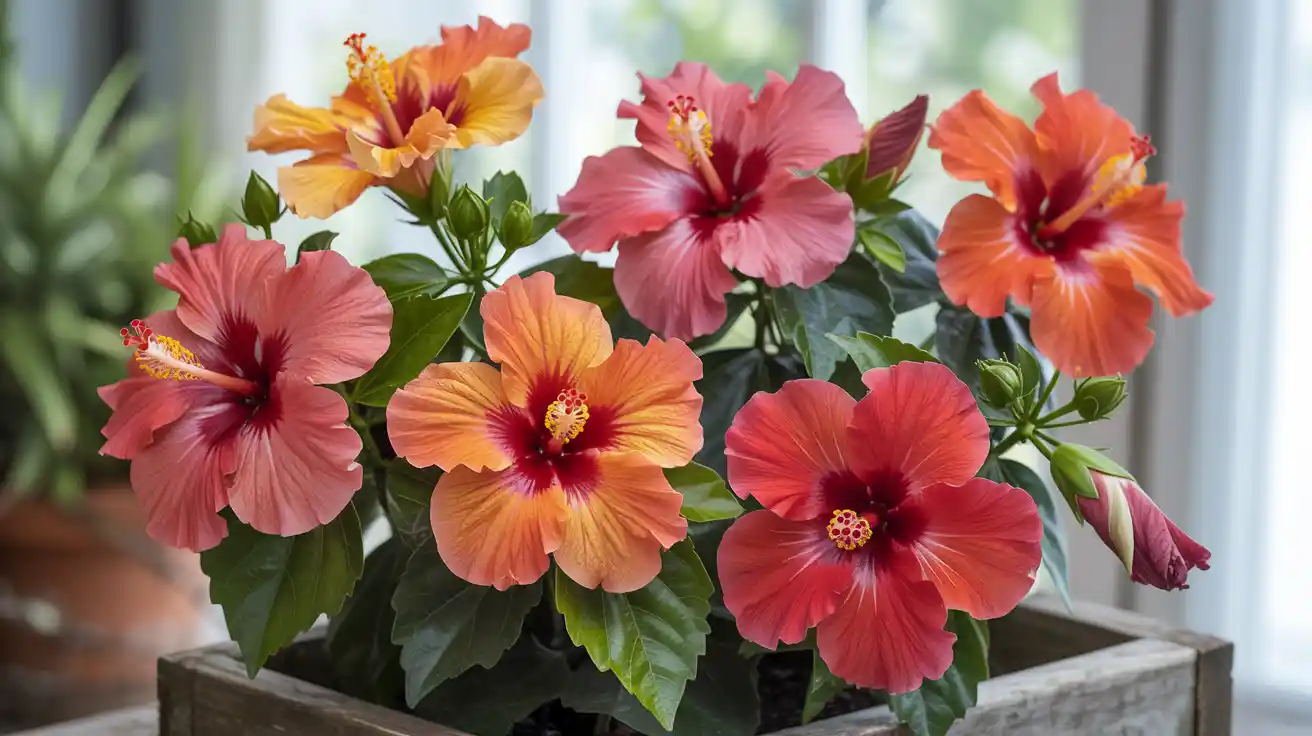
If you’ve been dreaming of those tropical blooms but feeling intimidated by hibiscus care, I’m here to break it down for you.
These beauties are much more forgiving than you might think—once you understand their basic needs, you’ll be rewarded with months of stunning flowers that’ll make your neighbors stop and stare, too.
What Makes Hibiscus Such a Garden Superstar?
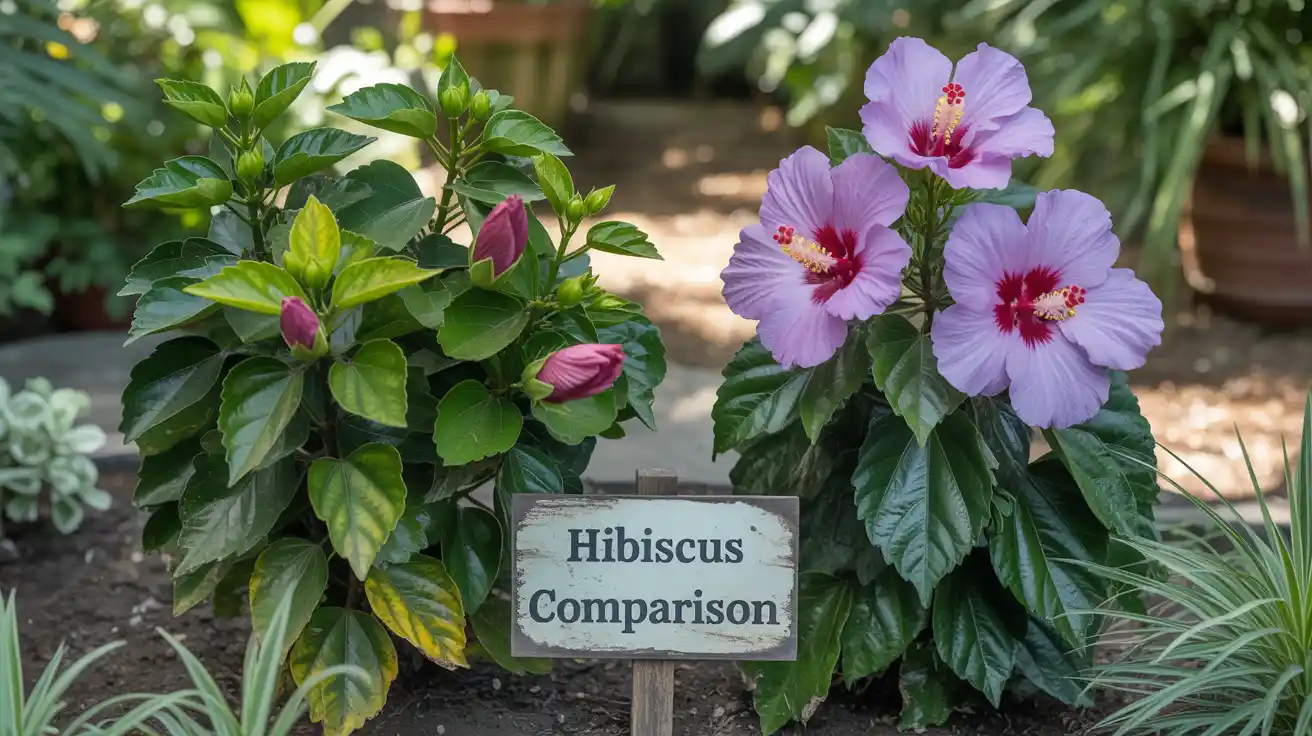
Picture this: flowers that can reach 6-8 inches across in colors ranging from classic red and pink to sunset orange, buttery yellow, and even deep purple.
That’s hibiscus for you!
These tropical and subtropical plants belong to the mallow family (think of them as hollyhocks’ glamorous cousins), and they’re absolute bloom machines when happy.
There are two main types you’ll encounter:
- Tropical hibiscus (Hibiscus rosa-sinensis): These are the fancy ones with glossy leaves and huge, exotic blooms. They’re tender perennials that need protection from frost.
- Hardy hibiscus (Hibiscus moscheutos): Also called rose mallow, these are cold-hardy perennials that can handle freezing temperatures but die back in winter.
In my opinion, both types are worth growing—I have three tropical varieties in containers and two hardy ones planted in my garden beds.
The versatility is part of what makes them so addictive!
Why Light is Your Hibiscus’s Best Friend
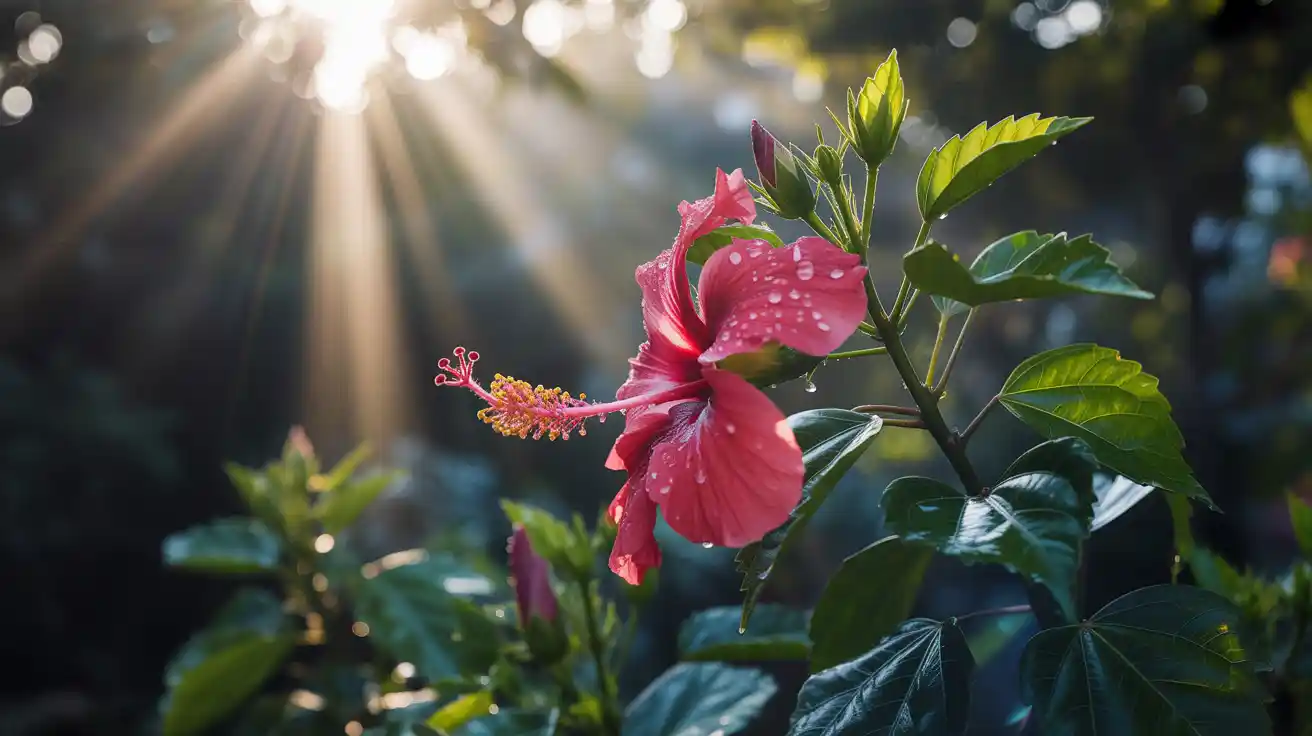
Here’s the golden rule I’ve learned through trial and error (mostly error, if I’m being honest): Hibiscus are sun worshippers, period.
These plants need at least 6 hours of direct sunlight daily to produce those show-stopping blooms we’re all after.
What happens with too little light:
- Fewer flowers (or worse, no flowers at all)
- Leggy, weak growth
- Pale, yellowing leaves
- Increased susceptibility to pests
I made this mistake with my first hibiscus—I planted it in what I thought was a “bright” spot that only got morning sun.
The poor thing grew tall and spindly with maybe two sad little blooms all season.
Once I moved it to my sunny south-facing patio? Game changer.
Pro tip: If you’re growing hibiscus in containers (which I highly recommend for beginners), you can move them throughout the day to chase the sun. I have a friend who does this religiously with her prized yellow hibiscus—it’s like a beautiful, flowery game of musical chairs.
How to Master Hibiscus Watering (Without Drowning Them)

Water is where things get interesting with hibiscus.
They’re thirsty plants that love consistent moisture, but they absolutely hate wet feet (root rot is their nemesis).
Think of it like this: they want to feel like they’re at a tropical resort, not stuck in a swamp.
My foolproof watering routine:
- Check the soil daily by sticking your finger about an inch deep
- Water thoroughly when the top inch feels dry but not bone-dry
- Water until you see it draining from the bottom holes (this is crucial!)
- Empty saucers after 30 minutes so they’re not sitting in standing water
Seasonal adjustments I’ve learned to make:
- Summer: Daily watering is often necessary, especially for container plants
- Spring/Fall: Every 2-3 days typically works
- Winter (for tropical varieties indoors): Much less frequent—maybe weekly
Here in the Midwest, our hot, humid summers mean that my container hibiscus sometimes needs water twice a day during heat waves.
I know it sounds like a lot, but trust me, consistent moisture equals consistent blooms.
Signs you’re getting it right:
- New growth is vibrant green
- Buds form regularly
- Leaves stay glossy and full
- No yellow, dropping leaves (unless it’s natural, older leaf drop)
Tips for Fertilizing Your Blooming Machines
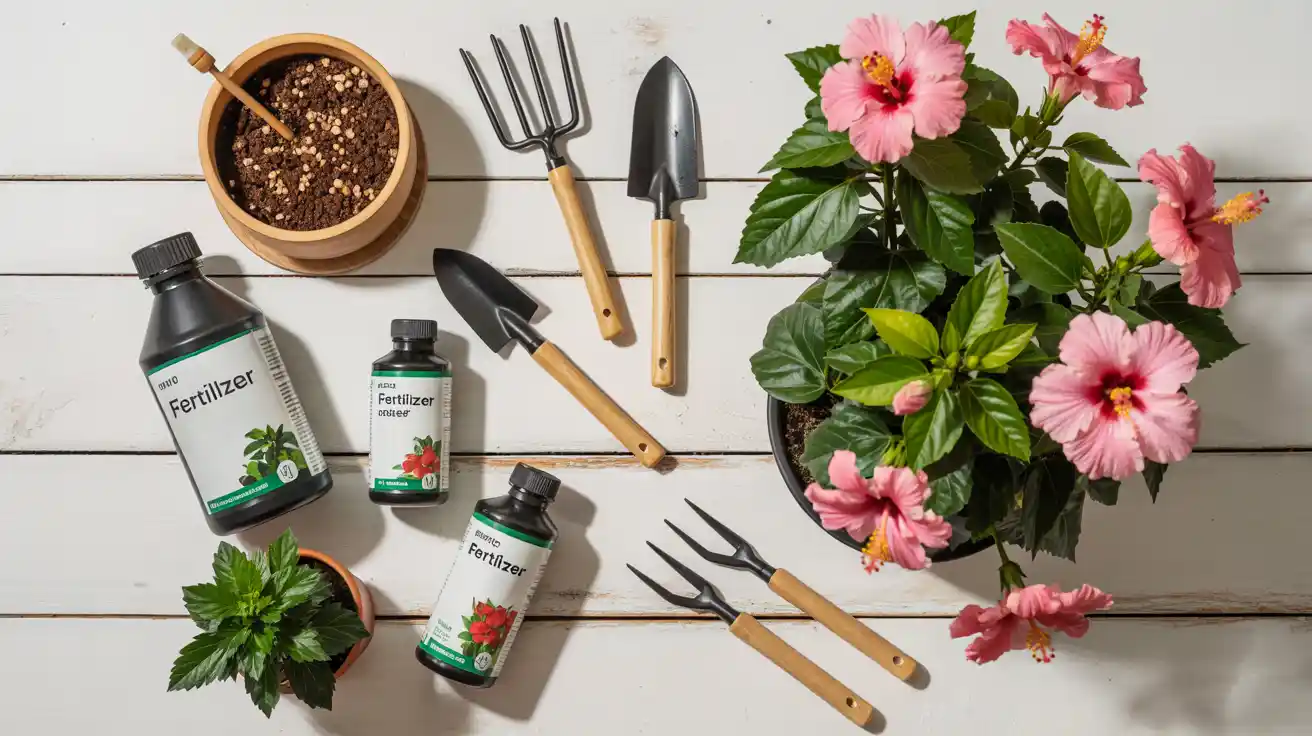
Hibiscus are what I like to call “hungry” plants—they need regular feeding to fuel all those gorgeous flowers.
I’ve tried various approaches over the years, and here’s what works:
My go-to feeding schedule:
- Growing season (spring through early fall): Feed every 2-3 weeks with a balanced liquid fertilizer (I use a 10-10-10 or 20-20-20)
- Alternative approach: Use a slow-release granular fertilizer in spring, then supplement with liquid feed monthly
What to look for in fertilizer:
- Balanced NPK ratio (nitrogen-phosphorus-potassium)
- Contains micronutrients like iron and magnesium
- Avoid high-nitrogen fertilizers (these promote leaves over flowers)
I learned this lesson the hard way when I used leftover lawn fertilizer on my hibiscus one spring.
I got the most gorgeous, lush green foliage you’ve ever seen—and exactly three flowers all season. Lesson learned!
Organic options I love:
- Compost worked into the soil in spring
- Fish emulsion every few weeks (warning: it smells, but plants love it)
- Banana peels chopped up and worked into container soil (free potassium boost!)
How to Prune for Maximum Blooms and Shape
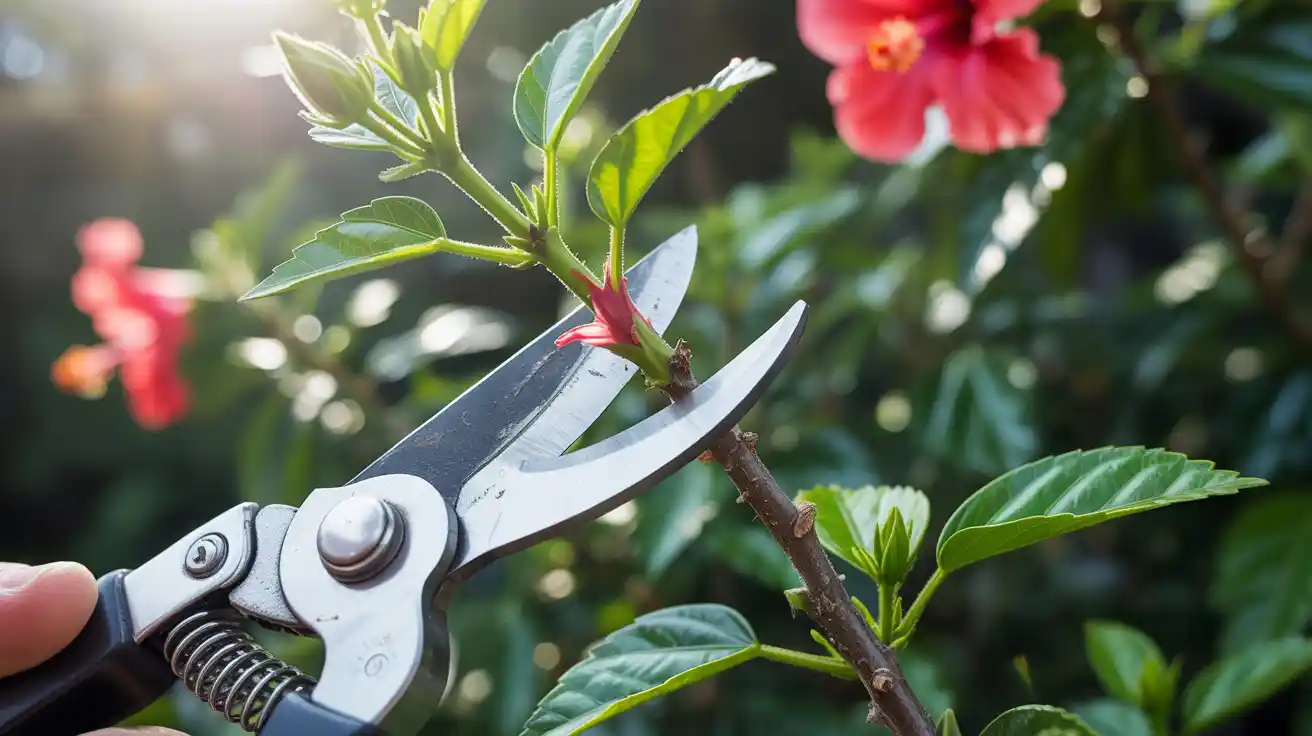
Pruning hibiscus used to intimidate me completely.
I was terrified I’d kill my plants or ruin their blooming potential.
But here’s what I’ve discovered: Hibiscus actually loves being pruned, and it encourages more flowers, not fewer.
When to prune:
- Early spring, before new growth starts (this is the big annual pruning)
- Light pruning throughout the growing season to maintain shape
- Deadheading spent flowers regularly (though not absolutely necessary)
Step-by-step spring pruning:
- Start with clean, sharp pruners (I cannot stress this enough—dirty tools spread disease)
- Remove the obvious problems first: dead, damaged, or diseased branches
- Cut back about 1/3 of the overall height to encourage bushy growth
- Remove any branches growing inward or crossing other branches
- Step back and assess the shape, making minor adjustments as needed
Summer maintenance pruning:
- Pinch or cut back leggy growth to encourage branching
- Remove any weak or spindly branches
- If you want, deadhead spent blooms (though hibiscus flowers naturally drop when finished)
The first time I did a major pruning, I was convinced I’d murdered my beautiful plant.
It looked like a collection of sad sticks! But within weeks, it exploded with new growth and more blooms than I’d ever seen.
Now I prune confidently every spring.
Quick pruning tips I wish I’d known sooner:
- Always cut just above a leaf node or junction
- Don’t be afraid to be aggressive—Hibiscus bounces back amazingly
- If you’re nervous, prune in stages over a few weeks rather than all at once
Common Problems and How I’ve Solved Them
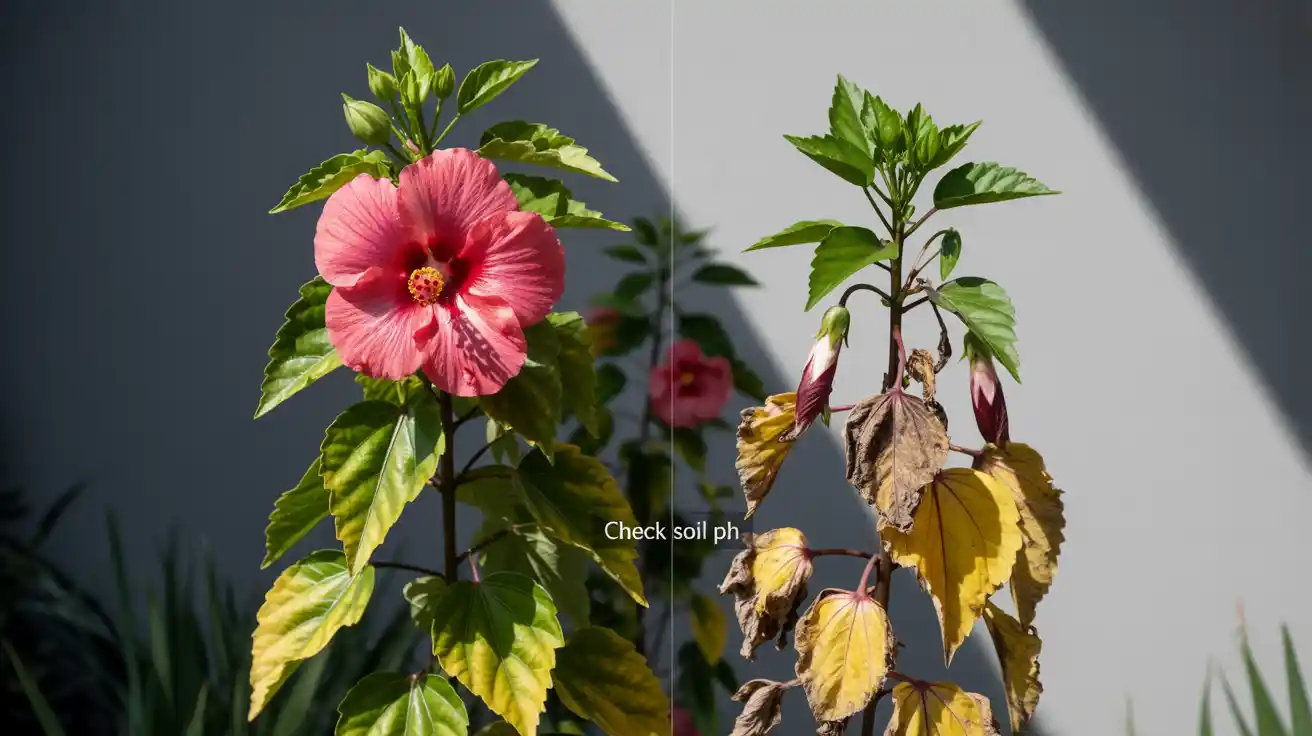
Let me share some of the challenges I’ve faced (because we all have them!) and what actually worked:
Yellow leaves dropping: This used to panic me until I realized it’s often just natural aging, especially on lower leaves. However, if it’s excessive, check your watering—both overwatering and underwatering cause this.
Buds forming but dropping before opening: Usually a stress response. I’ve found this happens when plants are moved suddenly, watering is inconsistent, or they’re not getting enough light. Patience and consistent care usually resolve it.
Fewer blooms than expected: Nine times out of ten, this comes down to light or fertilizer. Make sure your plant is getting that crucial 6+ hours of direct sun and regular feeding during the growing season.
Pests (aphids, whiteflies, spider mites): I’ve had success with insecticidal soap spray applied in early morning or evening. For severe infestations, neem oil works well, though it requires patience and repeat applications.
Seasonal Care: What I Do Throughout the Year

Spring (my favorite hibiscus season!):
- Move containers outside after the last frost danger passes
- Do major pruning and repotting if needed
- Start a regular fertilizing schedule
- Gradually increase watering as temperatures warm
Summer:
- Maintain consistent watering (this is the make-or-break season)
- Continue regular feeding
- Light pruning as needed for shape
- Enjoy the flower show!
Fall:
- Gradually reduce fertilizing
- Begin preparations for winter (if growing tropicals)
- Take cuttings if you want to propagate
Winter:
- For hardy hibiscus: Cut back to ground level after the first hard frost
- For tropical hibiscus: Either bring indoors or take cuttings for next year
- Minimal watering for indoor plants
Here in Zone 6, I treat my tropical hibiscus as annuals or bring them indoors (though indoor overwintering is tricky and I’m still perfecting it).
If you prefer a simpler approach, hardy hibiscus might be your best bet—they come back reliably every spring like clockwork.
Container vs. Garden Growing: What Works Best
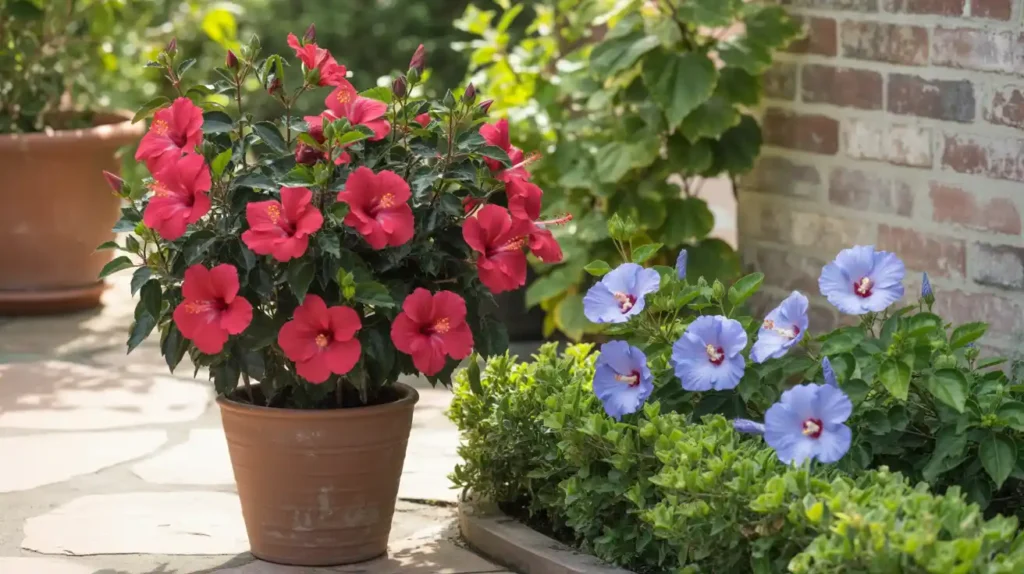
I’ve grown hibiscus both ways, and honestly, both have their perks:
Container growing advantages:
- Move plants to follow the sun or protect them from the weather
- Better control over soil and drainage
- Easier to bring tropicals indoors
- Great for patios, decks, and small spaces
In-ground planting benefits:
- Less frequent watering once established
- Plants can grow larger and more impressive
- Better for hardy varieties in cold climates
- Lower maintenance overall
My current setup: I have hardy hibiscus planted in my sunny border and tropical varieties in large containers. This gives me the best of both worlds—reliable perennial performance from the hardy ones and the flexibility to overwinter the tropicals.
Container tips I’ve learned:
- Use pots at least 12-18 inches wide for mature plants
- Ensure excellent drainage (I add extra perlite to potting mix)
- Choose containers you can move when full of wet soil (trust me on this one)
- Light-colored pots help prevent root overheating in summer
Choosing the Right Varieties for Your Space
With so many gorgeous options available, selection can feel overwhelming. Here are some varieties I’ve personally grown and loved:
For beginners, I recommend:
- ‘Lord Baltimore’ (hardy, reliable red blooms)
- ‘Luna Pink Swirl’ (hardy, huge pink and white flowers)
- ‘Hibiscus rosa-sinensis’ standard varieties (tropical, widely available)
For container growing:
- Dwarf tropical varieties
- ‘Hibiscus acetosella’ (red shield hibiscus—grown for foliage)
- Any hardy hibiscus in a large container
For cold climates:
- Any of the hardy hibiscus (Hibiscus moscheutos) cultivars
- These reliably survive winters down to Zone 4-5
The key is starting with one or two plants and learning their needs before expanding your collection. Trust me, once you see those first spectacular blooms, you’ll be planning where to fit more!
Your Hibiscus Journey Starts Now
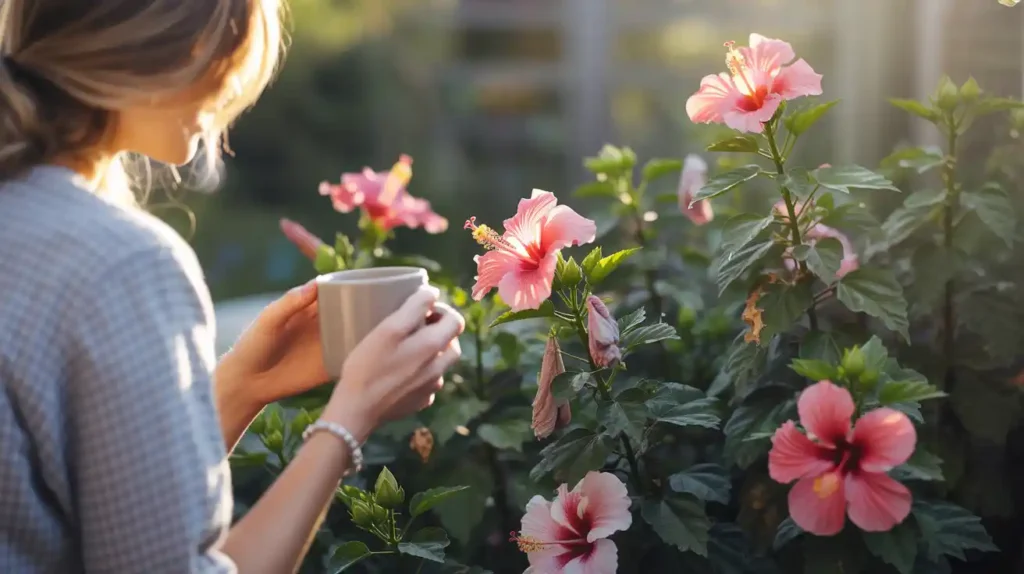
Looking back at my hibiscus adventure, I’m amazed at how these plants have transformed not just my garden, but my confidence as a gardener.
What started with that moment of flower envy at Martha’s house has become one of my greatest gardening joys.
The truth is, hibiscus aren’t as complicated as they might seem.
Give them sun, consistent moisture, regular feeding, and occasional pruning, and they’ll reward you with months of tropical paradise right in your backyard.
Even if you kill your first one (I certainly did), don’t give up—each plant teaches you something new.
Whether you’re dreaming of a single stunning container specimen on your patio or planning a whole hibiscus border that’ll make the neighbors talk, you’ve got everything you need to get started.
Pick a sunny spot, choose your first variety, and prepare to fall in love with these incredible blooming machines.
Your future self-the one standing in the garden this time next year, coffee in hand, admiring those dinner-plate-sized blooms—will thank you for taking that first step. Trust me, I’ve been there, and the view is spectacular.
Happy gardening, and here’s to many seasons of show-stopping hibiscus blooms ahead!
